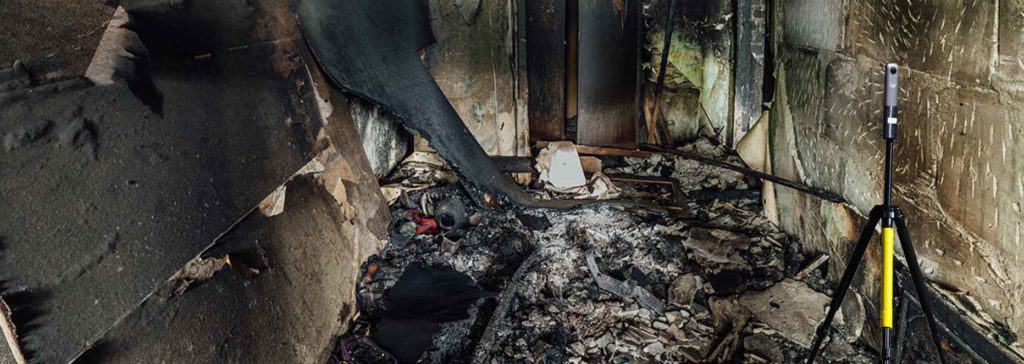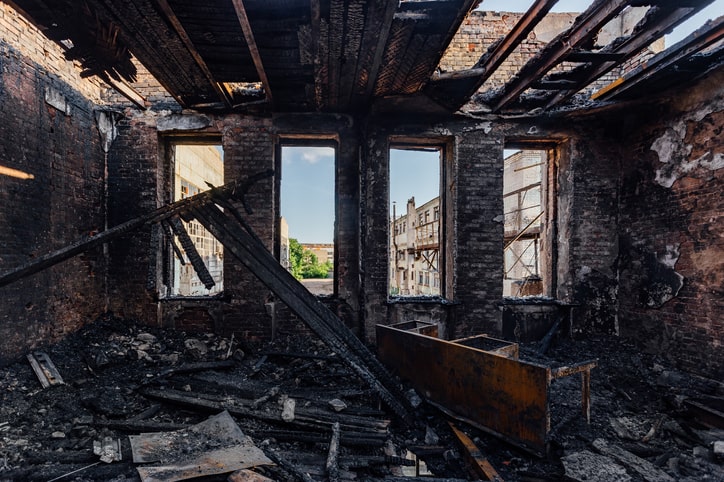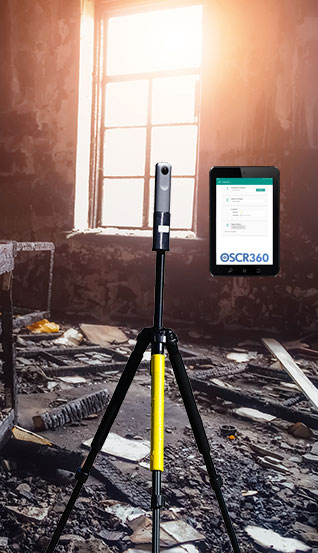
What are the Preliminary Steps to an Arson Investigation? A Comprehensive, Multimedia Approach
Upon arrival to a fire scene, a fire investigator must immediately assess the situation and begin a systematic and deliberate investigation – particularly if there is a possibility that the fire was intentional. If an arson case is to have any chance of being successfully prosecuted down the road, every “i” must be dotted and every “t” crossed during the investigation process. When arson is suspected, the investigator(s) is ultimately responsible for identifying and collecting evidence to support the following:
1. Proof of Incendiarism
Where did the fire originate and what was its cause? An experienced investigator must examine the fire scene, searching for the origin and burn patterns, as well as eliminate the possibility of natural causes.
2. Proof of Opportunity
Who had access to the building? Depending on the location of the fire and type of structure in which the fire occurred, surveillance video and witness testimony can be key to this part of the investigation.
3. Proof of Motive
Who is insured and stands to gain financially? Who stands to lose? Who could be seeking revenge or harm? Did juvenile vandalism or mischief play a role? Was fire used as a weapon?
4. Connecting the Evidence
How do other factors contribute to the arson investigation? For instance, were the sprinkler systems functional? Where was the owner at the time of the fire?

What are the Preliminary Steps to an Arson Investigation?
A well-organized fire investigation typically follows specific steps including:
- A preliminary examination of the scene (also known as a “size-up”).
- Witness interviews (including those who stand to gain, those who are victims, and those who may have observed a key detail to the case).
- A comprehensive scene examination and evidence collection.
- A follow-up investigation that pieces the case together from start to finish.
Within each of these steps, there are a multitude of best practices, steps to follow, safety procedures to adhere to, and laws to abide by. To an outside observer, the process may seem daunting, but a trained, experienced fire investigator is well-equipped to get the job done.
OSCR360 is a fire investigation tool that aids arson investigators with evidence collection, witness testimony and arson prosecution, using a comprehensive, multimedia approach. Not only does OSCR save time and resources, the system also allows investigators, witnesses, prosecutors and juries to explore the case from a dynamic, visual perspective – essentially providing context to the crime scene, case details and any evidence. How can OSCR assist with each of the preliminary steps to an arson investigation?
- Preliminary Scene Evaluation (“size-up”)
From the moment an investigator arrives on-scene, OSCR360 is ready to document the scene in 360-degrees, floor to ceiling. In minutes, the OSCR Capture Kit is set-up and working to preserve every detail of the outdoor environment, including first response vehicles, bystanders and witnesses, nearby vehicle information, an outside view of the blaze and more. If the fire has been extinguished and the scene is deemed safe to enter, OSCR can be used indoors to capture scene overalls – even in cases where the scene is still dripping or wet. The system’s HDR capabilities capture scenes in minimal lighting, which is especially helpful since most fire scenes are dark and soot-filled.
If the building’s interior is deemed too dangerous for human entry, OSCR can enter the scene through a window on a stick or tripod, providing investigators with their first scene photographs. The OSCR camera auto-rotates, meaning that no matter what the orientation of the camera is, the images you capture will be viewable upright. Unable to fly your drone? OSCR can even capture aerial photos of the scene using its 27-ft tripod. Though OSCR covers a lot of ground, each OSCR photograph takes only a few seconds to capture and is instantly viewable on the OSCR tablet, saving the investigative team a great deal of time.
- Witness Interviews
Visuals are extremely beneficial during when interviewing witnesses. Scene images allow witnesses to confirm the scene, verify their own positioning/viewpoint, and to point out the details of what they saw. If a case is particularly traumatic, OSCR allows individuals to virtually revisit the scene, rather than being forced to visit a physical location or re-live a crime. Should the case go to trial down the road, witnesses can virtually revisit the scene to jog their memories and mentally prepare for the stand.

- Evidence Collection
Any and all digital evidence that is recorded at the scene is compiled and preserved in OSCR360. OSCR spherical photos themselves can capture point-of-origin and other pertinent details, like the location of heating and electrical equipment, smoke and heat patterns, and structural damage. Plus, each photo is automatically time-, date-, and location-stamped. Digital blueprints, diagrams, sketches, maps, surveillance footage, close-up photos, 911 calls, newspaper clippings, tv reports, consent forms, and more can be stored within OSCR for easy, organized access.
- Follow-up
All of the digital evidence that was collected is easily uploaded and preserved within the OSCR software. Evidence is can be attributed to each scene, providing context for where evidence was found. For instance, a close-up photograph of a gasoline can can be pinned exactly where it was found within the OSCR spherical photo, a witness interview transcript would be pinned to the location the witness pointed out, and so on. OSCR projects are shareable via a free viewer – making it easy to pass projects to other investigators, attorneys or the defense.
The follow-up from a case isn’t necessarily the end. Look for part II of this blog series to understand how OSCR360 can aid in the prosecution of arson cases in the courtroom.